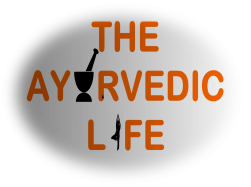Known by many names, Mor Kozhambu, Kadhi, Majjige Huli, Pulisseri, Majjiga Pulusu, this is tantalizingly tasty, exotic soul food at its best. This particular dish made with nendram pazham or ethapazham (sweet, ripe, longer type of banana), is a specialty of Kerala. This is also one of my mom’s recipes. In fact, I had the good fortune of being with her during a recent trip to India, during which she cooked and I clicked and ate :).
Ingredients (serves 4):
- 2 ripe nendram pazhams (1 is shown whole and unpeeled and the other one is chopped in the picture below)
- 1 dried red chilli (you can increase or decrease this as per your family’s spice tolerance)
- Fenugreek (methi) seeds (1 tsp)
- Fenugreek (methi) powder (a pinch)
- Mustard seeds (1 tsp)
- Turmeric (haldi) powder (1 tsp)
- 1 green chilli (or as per taste)
- Curry leaves (a handful)
- Grated coconut (2 heaped tbsp)
- Yogurt (slightly sour tastes good in this recipe) (1.5 cups)
- Jaggery (1 tbsp)
- Oil (1 tbsp)
Method:
- Ensure that the bananas are nice and ripe (slightly overripe is great too!). Cook the chopped pieces in a little water (don’t use too much water or you will end up with a watery mor kuzhambu) with turmeric and jaggery.
- When cooked, mash the bananas well or run them once through a blender till the pieces are coarsely ground. Keep aside.
- In a teaspoon of oil, roast the methi seeds with red chillies on medium heat, until slightly browned.
- Add the coconut, part of the yogurt (take only as much yogurt as is required for grinding), green chilly, curry leaves, and if necessary water left over from boiling the bananas to the methi and red chilly and grind well.
- Now add the remaining yogurt, ground mixture, mashed bananas, water left over from boiling the bananas and any additional water to get the desired consistency of mor kuzhambu with some salt and mix well.
- Heat the above and switch off before the kuzhambu boils over.
- Heat the remaining oil, add mustard seeds and wait for them to splutter. Then add methi powder and some curry leaves and pour on the mor kuzhambu. Your yummy nendram pazham mor kozhambu is ready to be enjoyed with some hot rice and ghee, chapathi/paratha/roti, upma, dosa, idli etc.
Tastes (Rasa):
Sweet (coconut, bananas, jaggery), sour (yogurt), salty (salt), bitter (fenugreek, curry leaves, mustard seeds), pungent (red and green chillies, mustard seeds), astringent (fenugreek, curry leaves).
Doshic Influence:
Nendram pazham has superior iron and protein contents than regular bananas. They can be safely consumed in moderation by all the doshas. In fact, in Kerala, nendram pazham is considered a super food of sorts for babies and steamed nendram pazham is a staple solid for most kids there. For afflictions like cough, black pepper powder with a mashed ripe nendram pazham is recommended. It is also good along with honey for anemia, pitta aggravation, TB and polio. In general though, bananas are considered a kapha aggravating food. Yogurt with its sticky, heavy qualities is kapha aggravating. If sour or store-bought, it is also pitta aggravating. To make home-made yogurt, boil some milk in a container, let it cool down and add a tablespoon of yogurt with live lactobacillus culture in it. Mix it well, cover and keep it for a few hours. The duration for yogurt to be formed depends on the climate – in a warm climate, yogurt gets ready in a 4-5 hours. If you live in a cooler climate, try keeping the covered vessel in the oven with the light turned on. It should set overnight. Home-made yogurt that is not sour, is not pitta aggravating. The addition of fenugreek increases the digestibility of the yogurt in general. Fenugreek is cooling and hence pitta pacifying in nature. It is rich in iron and hence helpful in combating anemia, good for diabetics, digestion problems, hair growth, reducing acne and increasing lactation. Coconut is a super food that is nourishing, yet energizing and boosts the metabolism. It is very good for pittas and is very cooling for the liver. It has some kapha aggravating qualities in excess.
Effects on the Mind (Gunas):
Overall this is a sattvic dish due to its sweet, mild, digestive and satisfying tastes and qualities. Rajas may increase if yogurt used is too sour or chillies and salt is over used. The dish will become tamasic if stored and reused over many days, although mor kuzhambu in general stores well and is regularly used the next day in most South Indian homes since the taste is considered to be enhanced the next day after the spices have soaked in over time. But using stale or spoiled ingredients will definitely increase tamasic qualities.



